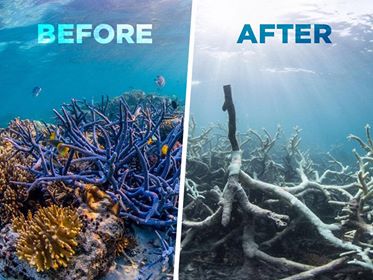The subtitle for this book is The Human Cost of Climate Change. It paints a scary picture of what the world will look like in fifty years and a hundred years. It also makes a compelling argument for why we can’t afford to ignore what is happening. The book assumes that there will be a 2 degree Celsius rise in temperature by 2100. This is on the low end of the temperature rise that can be expected. It’s smart in that it allows the author to avoid being considered too alarmist and it turns out even a 2 degree rise would be horrific. I think everyone should read this book. Rather than write a true review, I would like to highlight some of the author’s major points.
I knew that the Industrial Revolution was the beginning of humanity’s love affair with releasing greenhouse gases (GHGs, the most important of which is carbon dioxide) into the atmosphere. What I didn’t realize was that the Earth didn’t start warming immediately. It wasn’t until the 197os and 80s that it started and it started slowly. This delay means that even if we stop releasing GHGs entirely right now the Earth would still warm for a while.
One of the major human impacts of climate change will be the displacement of people. People will be forced out of their homes for a variety of reasons; rising oceans will force people away from the coast, higher temperatures will cause droughts and widening deserts, glaciers melting will cause floods in one season and droughts in another. Glaciers store water and release it into rivers as they melt. Melting too fast or disappearing and melting not at all creates floods, droughts and then a lack of water. Hurricanes and other major weather events will get worse because warm ocean water fuels hurricanes. These displaced people will live in refugee camps and overcrowded cities that will have poor sanitary conditions and people packed together breed disease.
The politics involved in global warming are complicated to say the least. But certain things are relatively clear. Rivers don’t pay attention to political boundaries and the need for water will cause conflict. For example, Turkey puts a dam on the Euphrates River and Syria and Iraq have a lot less water to work with. Tens of thousands and maybe millions of people moving to other countries when their countries are no longer habitable will also cause political tension.
What you don’t want to know: There are island nations, including the Maldives and Tuvalu, who will disappear under the sea even if we start cutting GHG emissions right now. “The level of GHGs today is higher than at any point in at least 650,000 years and is currently rising more than fifty times as fast as what would be caused by natural fluctuations.” “The best information we have from still-earlier periods suggests that you would have to go back at least 15 million years to find another time with concentration levels [of CO2] as high as today’s. During that period, temperatures were much warmer than they are today, sea levels were 20 to 35 meters higher, and no permanent ice cap existed in the Arctic.” “Every year, a part of Nigeria about the size of Rhode Island turns to desert. Across the continent, the Sahara is spreading southward at a rate of more than three miles a year.” “Between the mid-1970s and the year 2000, for example, climate change caused the annual loss of more than 150,000 lives….”



